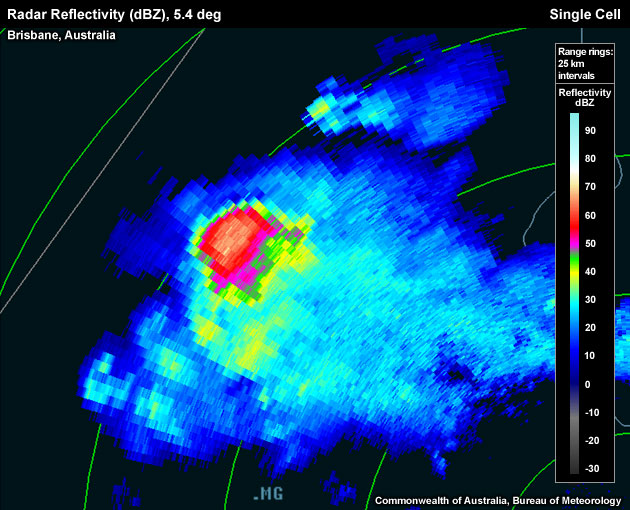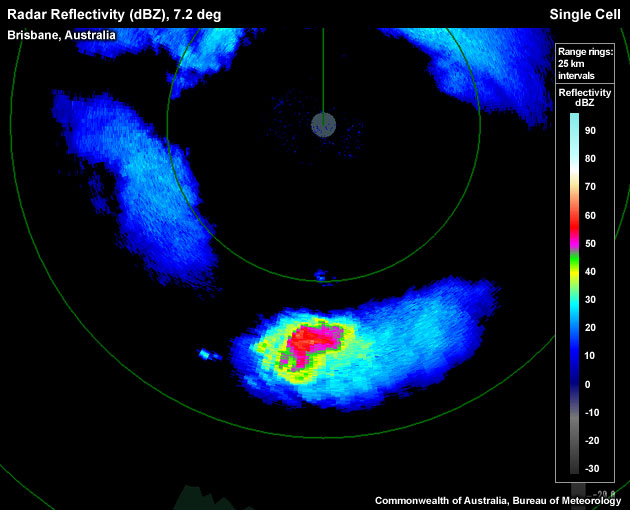Detection
The terminology "single cell" refers to a radar reflectivity signature of a storm top which is associated with a dominant longer-lived updraft of a multicell thunderstorm or a supercell. For example, the Single Cell signature aims at identifying supercells and other shear–enhanced dominant updrafts. For example, supercells possess updrafts that are comparatively large, steady, long-lived and tend to move anomalously (e.g., not with the steering flow). To determine if the signature you are seeing is a Single Cell, use the criteria below.
Reflectivity: PPI/Plan View
Determining Updraft Location:
- Step up in elevation scans until you run out of >50 dBZ echoes.
- Step down one elevation scan. This is the echo top.
- Is there one or more >50 dBZ echoes that are steadier, larger, longer-lived and that move anomalously in comparison with other cores in the vicinity? If yes, you have a Single Cell signature.
Potential Difficulties in Detection
- Radar sampling – The thunderstorm is too close to the radar therefore the radar undershoots the storm top (inside the "cone of silence").
Examples of Single Cells

PPI slice through a cell at approximately 9.5 km above radar level. This storm is a supercell.

PPI slice through a cell at approximately 9.0 km above radar level. This storm is a supercell.
This loop shows the gradual emergence of two dominant, single cell echo tops in a splitting supercell case. The system starts off with a tightly grouped multicell cluster possessing a common anvil. Then, two single cell signatures begin to emerge in both the left- and right-moving storms. In particular, the left-mover retains its multicellular character, even after the splitting process.
Single Cell Look–a–likes
- Multicellular pulse thunderstorms: in weaker deep layer shear environments storms tend to be multicellular in nature with several collocated updrafts in different stages of development. At any one scan it may seem as though one of the pulse storms is a single cell with one dominant reflectivity signature, but it may merely be one or more shortlived cells developing and dissipating within a scan or two (~20 minutes). Be sure your longer-lived "dominant cell" is the same cell as in previous scans. Looping the images can help with this identification process.
